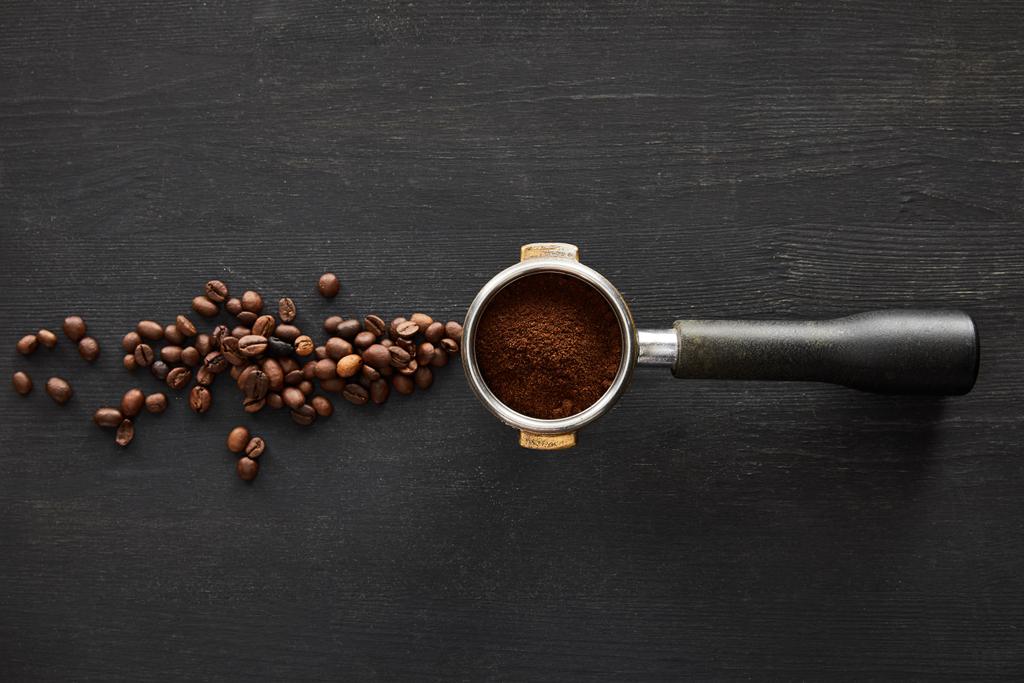An aromatic coffee can only develop its full flavor with an optimal grind and a suitable dosage.
The degree of grinding selected has a decisive influence on the taste of our coffee. Here we show you what it’s all about.
The correct degree of grinding differs depending on the preparation method and the type of coffee. If you want to prepare an enjoyable coffee, you should consider a few tips. If the dosage or grinding is incorrect, fewer aromas develop and the quality of the coffee is significantly reduced. The art of the right preparation is not that difficult to learn. Below we give you some helpful tips for a perfect grind.
In order to be able to choose the right degree of grinding, you first have to understand what grinding is all about. Let’s take a closer look at how coffee is made. The degree of grinding can significantly influence the extraction process. During this, water is poured through the respective ground coffee at a certain flow rate. Depending on the permeability of the flour, more or fewer aromas will unfold and be released into the coffee.
The degree of grinding should be individually adjusted depending on the desired taste and the type of coffee selected. Incidentally, flour that is too fine can lead to over-extraction, which would result in a bitter and unpleasant taste. The degree of grinding is therefore decisive for optimal coffee enjoyment.
Everything about coffee extraction
In general, a maximum of 30% of the ingredients in a ground coffee bean can be extracted. However, with such a strong extraction, a very intense flavor is achieved. The bitter substances of the extracted beans are so pronounced that one can hardly speak of an enjoyable coffee. The Specialty Coffee Association of Europe, SCAE for short, sets the benchmark for perfect extraction at around 18-22%. In this way, all the essential aromas dissolve and the coffee gets its typical aromatic taste. If you like your coffee a little stronger or weaker, you can of course choose a different grind. If aromas and strength are in a perfect relationship to each other, then all ingredients have dissolved optimally. Incidentally, the SCAE recommendation is based on a 50-year-old American study. Experience has shown that the extraction of most coffees has leveled off at these values even today, so that the study provides a really good basis.
According to the SCAE study, overextraction occurs from 22%. From this point on, fine nuances no longer stand out and the bitter, unpleasant taste overshadows the individual flavors of the different types of coffee. The color of the coffee also changes to a disproportionately dark tone. So, during the grinding of a coffee, the extraction affects the final flavor and intensity. An espresso, for example, has an extremely dark crema and sometimes even tastes a little burnt. On the other hand, light and thin coffees are characteristic of under-extraction. These have very few components of the coffee bean. According to the SCAE definition, this occurs with extractions below 18%. The crema of the coffee in question is also light and thin. With very low extraction values, this can even be absent and only watery coffee water remains. When choosing your degree of grinding, you should therefore be between 18-22%. Experimentation also helps to find the right grind and thus create an individual coffee taste.
Individual coffee taste
The grinding degree of coffee does not alone determine how the coffee tastes afterwards. Of course, factors such as the choice of coffee bean and the brewing method as well as the dosage also play a decisive role. The grind also depends on the moisture and freshness of the coffee – you should always adjust the degree of grind here. The individual coffee taste has its origins in the coffee bean itself. With the right preparation, you can bring in more and more individual nuances and thus put together your personal favorite coffee.
Whether portion grinder, coffee grinder or other type of preparation, the degree of grinding is defined by individual specifications and personal taste. While many people like strong coffee, others prefer light nuances and a low intensity of taste. Choose a grind that suits your preferences or simply try different grinds.




